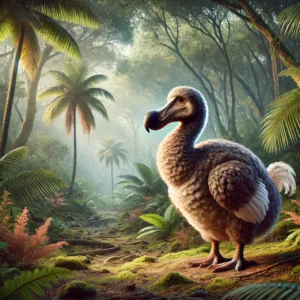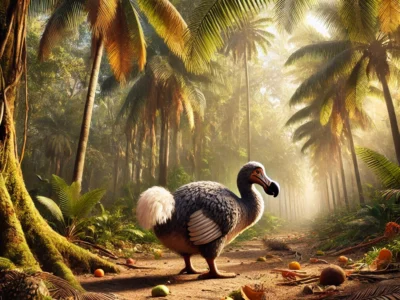Why dodo was extinct ?
 The dodo (Raphus cucullatus), a flightless bird native to Mauritius, became extinct by the late 1600s, less than a century after it was first discovered by humans. Its extinction was primarily due to human activities and the introduction of invasive species to its habitat. Here are the key factors:
The dodo (Raphus cucullatus), a flightless bird native to Mauritius, became extinct by the late 1600s, less than a century after it was first discovered by humans. Its extinction was primarily due to human activities and the introduction of invasive species to its habitat. Here are the key factors:
1. Overhunting
- Sailors and settlers hunted the dodo extensively for food. Although reports suggest the meat was tough and not very palatable, the birds were an easy source of food because they were flightless and had no fear of humans.
2. Habitat Destruction
- Mauritius was heavily deforested by settlers to make way for agriculture and settlements, which destroyed the dodo’s natural habitat, including its nesting and feeding areas.
3. Invasive Species
- Rats, pigs, and monkeys brought by sailors and settlers preyed on dodo eggs, which were laid on the ground. The bird’s inability to defend its eggs significantly reduced its reproduction rate.
4. Lack of Natural Predators
- Before humans arrived, the dodo had no natural predators, leading to its lack of fear and defensive behavior. This made it particularly vulnerable to new threats.
5. Ecological Naivety
- The isolated evolution of the dodo in Mauritius meant it lacked adaptive behaviors to avoid predators, making it defenseless against human activities and introduced animals.
Timeline of Extinction
The dodo was first documented by Portuguese sailors around 1507. By the late 1600s, it was completely extinct, with the last confirmed sighting reported in 1662.
The story of the dodo’s extinction serves as a poignant reminder of the impact human activities can have on biodiversity, especially in isolated ecosystems. Efforts to conserve species today often draw lessons from the dodo’s fate.
What's your reaction?
Excited
0
Happy
0
In Love
0
Not Sure
0
Silly
0

